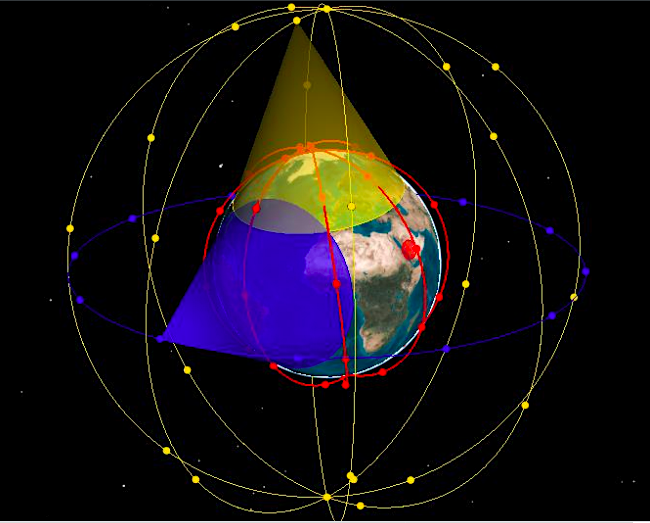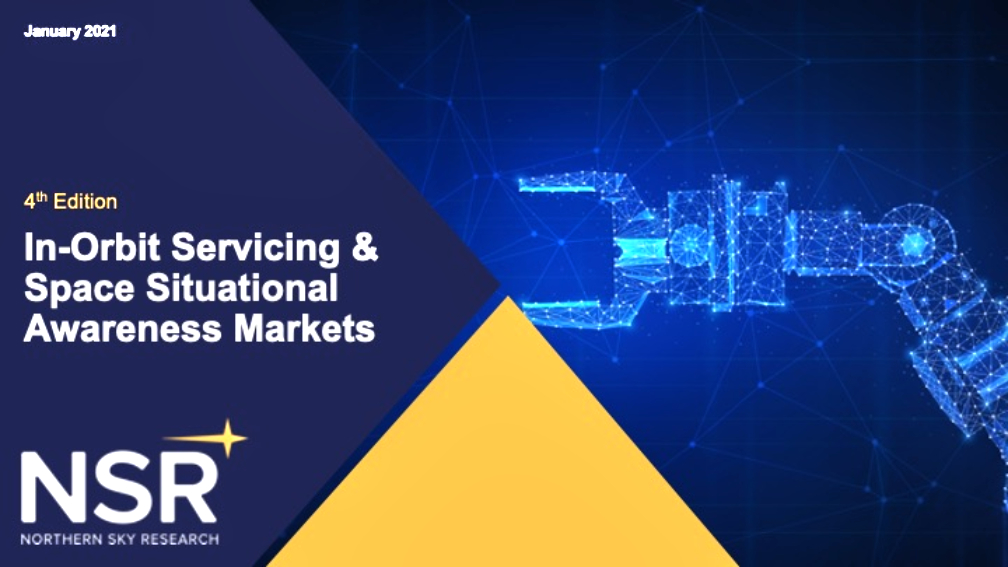The Planet Labs Flock 3p constellation is in LEO at 500 km and doing an effective job of imaging all the land area of the Earth daily, albeit at around 5 meter resolution. The best angular resolution achievable for a given telescope diameter is determined by the diffraction limit.For visible light at 500 km distance this works out to a minimum aperture diameter of about 40 cm to achieve 1. A Sun-synchronous orbit (SSO) is a type of polar LEO that exploits the regression of the ascending node caused by the Earth’s equatorial oblateness to “twist” the orbit at a rate of one revolution per year (0.9856 degrees per day). Reading Wikipedia on Sun-synchronous orbit a few days ago when trying to refresh my memory on orbital mechanics of SSO, I noticed this as a rather vague mention: Sun-synchronous orbits are possible around other oblate planets, such as Mars. But Venus, for example, is too. The bookish definition of the sun-synchronous orbit is given below (wiki). A Sun-synchronous orbit (SSO, also called a helio-synchronous orbit) is a geocentric orbit that combines altitude and inclination in such a way that the satellite passes ov.

Source: Landsat-6 Programming and Control Handbook
Schematic diagram illustrating the geometry of a sun-synchronous orbit for the morning descending node of Landsat.
This schematic appears in the Landsat 6 Programming and Control Handbook that was prepared by Martin Marietta Astro Space in 1993.

Like all of the Landsat satellites, Landsat 6 would have been in a sun-synchronous orbit had its launch been successful.
The L6 Handbook tells us, “for a nominal sun-synchronous orbit (i.e., one that precesses at a rate of 0.9856°/day or 360°/year), the scene and spacecraft illumination conditions vary throughout the year but repeat on a yearly cycle. The changes during the year occur because apparent Sun motion in the ecliptic plane is non-uniform, whereas the satellite orbit precession is uniform relative to the equatorial plane. The parameter that determines the actual illumination time histories is the orbit o’clock angle. This is the angle between the ascending or descending node and the “mean sun” vector. For a perfect unsynchronized orbit, the orbit o’clock angle remains constant. Furthermore, the Local Mean Sun Time (LMST) of the nodal crossing is the orbit o’clock angle. The relationship is shown in [this figure].”
Smallsats are revolutionizing the way we leverage space as
a resource and have been a driving force in the new space revolution.
Here on planet Earth, we are on the brink of a massive shift in the space industry, where the growing commercialization and democratization of space are bringing new information with incredible uses to every industry, from energy and agriculture, to finance, government, human rights, defense and more.
Part of that shift is the growing use and advancement of small satellites (smallsats).

While there is no official or established standard for a smallsat, the term typically refers to spacecraft with a mass of less than 500 kg, though some within the industry consider the threshold to be less. Within this category there are several classifications of smallsats.
Nanosatellites are spacecraft with a mass of 1-10 kgs.
Microsatellites are spacecraft with a mass of 10-100 kgs.
Minisatellites are spacecraft with a mass of 100-500 kgs.
CubeSats are the only class of smallsats with a more clearly defined standard. A CubeSat is made up of units – one unit is a 10x10x10 cm cube. The CubeSat is then defined by the numbers of units, such as 6U or six units.
Similar to computers during the technology revolution, satellites continue to shrink in size; however, their capabilities are becoming more effective as technology advances. We are seeing smallsats execute revolutionary missions that are changing the way we see our planet, enabling us to leverage space for continued research and exploration.
Why develop smallsats?
Smallsats are significantly more cost effective than larger spacecraft and easier to produce, making them better suited for constellations. Constellations—groups of satellites working together as a system—are enabling new technologies and applications, including BlackSky’s global monitoring service. Without access to frequent images and information collected through our constellations of smallsats, we would not be able to identify, analyze and deliver timely insights.
What orbits are used for smallsats?
The orbit on which a satellite is placed is dependent on the satellite’s mission, but the most common orbit for smallsats is Low Earth Orbit (LEO).
Satellites in LEO have altitudes as high as a couple thousand kilometers. This proximity to the Earth provides a handful of advantages, including better positioning for capturing images, contacting the satellite, and allowing for a more straightforward deorbit process (the atmospheric drag that pulls the satellite into the atmosphere, causing it to burn up). One complete orbit in LEO takes about 90 minutes
Another key advantage to LEO is the availability of launches from Earth. As a common orbital destination, there are typically more launches available, which is helpful when trying to launch a large number of satellites for a constellation.
Sun Synchronous Orbit
One type of low earth orbit commonly used for earth observation satellites is called a Sun Synchronous Orbit (SSO). SSO is a polar orbit, meaning it passes over the North and South Poles. The name Sun Synchronous, describes the fact that the orbit maintains a consistent orientation relative to the sun. This means that images collected by satellites in SSO have consistent lighting, making these orbits appealing for Earth imaging satellites. However, it also means that all images collected by the satellite will be at about the same time each day, limiting the variety of images collected of one location—which explains why the world has never seen a satellite image of the Super Bowl! However, with growing constellations of satellites on varying orbits, capturing an image of this should be a reality soon.
Understanding Orbital Inclination
If some satellites are capturing images of the same place at the same time, how do we capture images of the rest of the globe? Different orbital inclinations.
An orbital plane describes the shape and orientation of an orbit. So, if a spacecraft is orbiting the Earth in line with the equator, it has an inclination of about 0 degrees. The Sun Synchronous polar orbit has an orbital inclination of about 90 degrees.
What does that mean for image capture? According to NASA, “Just as different seats in a theater provide different perspectives on a performance, different Earth orbits give satellites varying perspectives, each valuable for different reasons.” This perspective can be tailored using orbital inclination to make sure that satellites have access to the variety of targets and imaging conditions that are useful!
Just as different seats in a theater provide different perspectives on a performance, different Earth orbits give satellites varying perspectives, each valuable for different reasons.
NASA
How are smallsats manufactured?
The simple answer? Quickly and cost-effectively. Smallsats are being manufactured at a much faster pace than traditional large satellites.
This change of pace is due to the smaller size of the spacecraft, the utilization of more commonly used, off-the-shelf equipment and parts, and an efficient approach to manufacturing. Each of these items also contributes to the cost-effectiveness of the manufacturing process.
Remember how the assembly line transformed the way cars are made? This approach is being applied to smallsat manufacturing, which is how organizations can now construct 20, 30 or 40 satellites in a year.
Smallsats are also taking a page out of the smartphone playbook. Most smallsat constellations launch one or two satellites to execute pathfinding missions, which allows organizations to study and observe the satellite’s performance. Based on the findings from those initial missions, the satellite developers may choose to make changes to future models, gradually updating features of the satellites, similar to releasing a new version of the same phone. Additionally, once on orbit, software updates can be applied to satellites, improving capabilities.
Leo Sso Orbit
How are smallsats using artificial intelligence (AI) and machine learning (ML)?

Smallsat constellations are collecting enormous amounts of data and imagery, which, when downloaded to Earth, require mammoth data analysis.
Orbit Sso Leo Polar
In order to understand and interpret this universe of data, many organizations are relying on the power of artificial intelligence (AI) and machine learning (ML) to reduce the data volume and/or processing time. AI and ML are well suited and equipped for handling complex, ambiguous and changing content.
Many organizations are now incorporating AI and ML for a variety of uses, such as data processing, monitoring telemetry and space-to-Earth transmissions. These emerging technologies possess the ability to process and detect patterns or anomalies throughout the complex process of reaching space and leveraging it to better understand our planet and beyond.
Sun Synchronous Orbit Ground Track

AI and ML are still young, budding technologies and how space organizations leverage these technologies will continue to evolve and enable new advancements. We anticipate AI and ML will continue to have a significant impact on the space industry.
Satellite In Sun Synchronous Orbit
Table of Contents
